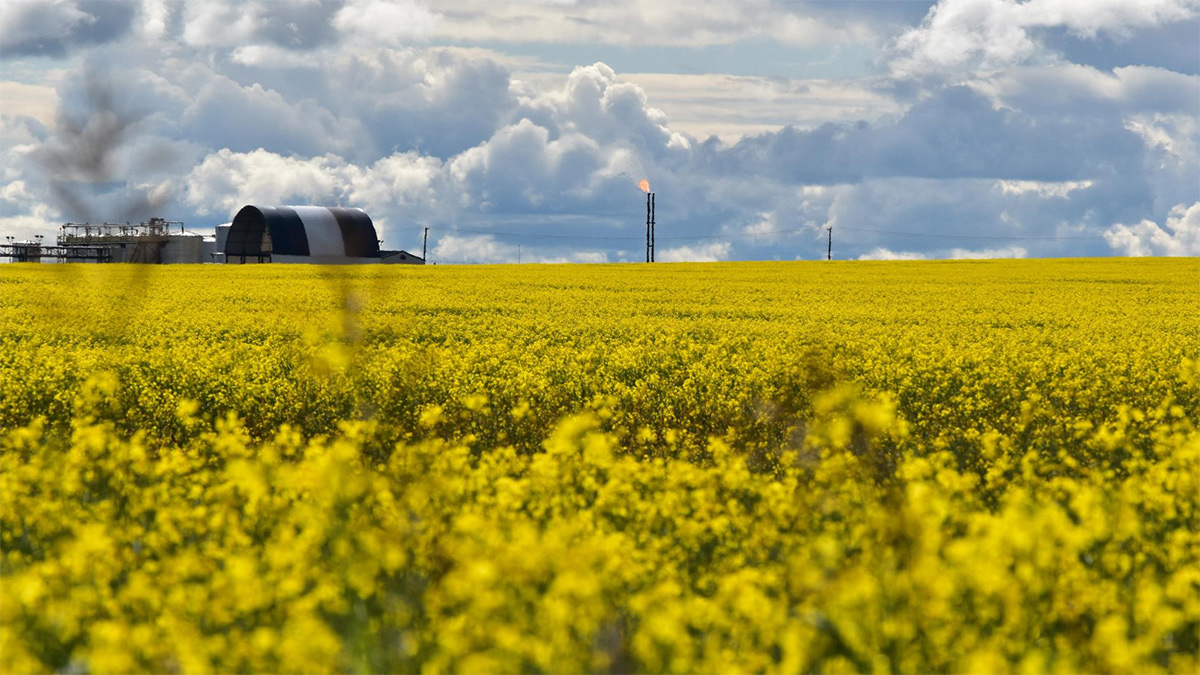Published:

Hundreds of thousands of fracking wells across North America will eventually be decommissioned.
They changed the global energy landscape but also caused widespread concern about methane leaking from them into the surrounding environment.
Dr Aaron Cahill from the Lyell Centre, an earth and marine sciences centre based at Heriot-Watt University in Edinburgh, has conducted the first-ever study of decommissioned fracking wells.
Dr Aaron Cahill said: “The number of these wells is increasing, and we need to understand their legacy and environmental impact.”
He examined 10 wells in the Montney region of British Columbia, Canada. His results show that while half of the wells did leak methane, the volume was small.
He also found that the soil surrounding the well consumed the methane, further limiting its impact.
He says his findings should prompt more comprehensive monitoring of decommissioned wells, and deter kneejerk repair operations that might generate a much larger carbon footprint.
The research is reported in the journal Geophysical Research Letters.
Fewer emissions than a single dairy cow
Cahill and colleagues examined 10 decommissioned wells in the Montney; nine of which had been fracked.
Cahill said: “These wells are usually cut, capped and buried around two metres below the surface. Soil or earth is then placed on top, and you can’t tell by looking that there was once a well there.
“We took measurements at the soil interface to detect and measure any gases coming out of the ground, which indicate the old well structure is leaking.
“We found that five of the 10 wells did have signs of leakage. The next thing we wanted to determine was whether it mattered.
“The average emission was only 500 kg.
“To put that in context, that’s less than the carbon footprint of one dairy cow, which emits around 5000 kg of carbon dioxide equivalents per year.
“So the leakage we observed was relatively small and perhaps nothing to worry about compared to other sources.”
Soil cleans up methane
Cahill and colleagues also found that the methane released by the wells was being broken down in the soils surrounding the wells, limiting how bad leakage was from a climate standpoint.
Cahill said: “We saw that methane was being converted to carbon dioxide by microbes in the soils after leaking from the wells.
“This has a massive mitigation effect on the overall impacts of leakage because methane is 80 times more powerful as a greenhouse gas over 20 years if it reaches the atmosphere.
“So for every molecule of leaked methane the microbes in the soils “eat” we get a massive reduction in the overall climate impacts.
“In fact, this is a process we could harness to combat climate change from leakage moving forwards”
“A better understanding of methane consumption in soils could help regulators, developers and operators minimize the impacts of leaking oil and gas wells.”
More monitoring required
Cahill points out that the 10 wells they investigated might not represent all decommissioned wells in British Columbia or elsewhere, and says this highlights the need for more monitoring.
“There are thousands upon thousands of these wells all over North America and around the world. We need to understand their long-term integrity - they’ll be in the ground forever, and in many places will be used on an ongoing basis.
“This has been an unusual study because, on the one hand, it will confirm the fears of many people - that decommissioned wells do leak methane more often than we acknowledge.
“But it also shows that, in the grander scheme of things, it likely doesn’t matter too much.
“The amounts are small, and the soil could deal with most potential impacts.
Cahill also hopes that the study will contribute towards a change in remediation policies.
“At the moment, the kneejerk response to discovering a well is leaking is to send the developer back with vehicles, diggers and drill rigs to dig up the well to repair or seal it by adding more cement. All that activity will emit far more carbon than the leak itself over hundreds of years.
“Soil methane consumption could potentially happen at all well sites that are leaking and should be explored further for potential use to limit climate impacts. Regulators and developers could use this natural tool to manage wells with low levels of leakage where it doesn't make sense to dig everything up.”
Cahill worked with colleagues from the Lyell Centre at Heriot-Watt on the project, which was funded by the British Columbia Oil and Gas Research and Innovation Society and facilitated by a student in receipt of a James Watt scholarship funded by Heriot-Watt University.